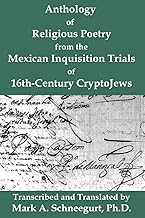By Mark A Schneegurt, Ph.D.

 WICHITA, Kansas — Imagine practicing Judaism, with no religious books, no Mishnah, no Midrash, no Talmud, no Torah, only select Christian Bibles. You have no Hebrew texts and no memory of Hebrew, except for a few garbled words of the Shema. Your communities have no rabbis. You can’t teach your children about Judaism until they are adults. How would Jewish traditions be continued? What would Jewish practice become as generations pass over hundreds of years?
WICHITA, Kansas — Imagine practicing Judaism, with no religious books, no Mishnah, no Midrash, no Talmud, no Torah, only select Christian Bibles. You have no Hebrew texts and no memory of Hebrew, except for a few garbled words of the Shema. Your communities have no rabbis. You can’t teach your children about Judaism until they are adults. How would Jewish traditions be continued? What would Jewish practice become as generations pass over hundreds of years?
This is what happened to Jews after their expulsion and forced conversion during the worldwide Inquisition. By 1492, Jews in Spain and Portugal were being forcibly converted to Catholicism, after more than a century of ever-increasing restrictions. While some conversos, as they were called, embraced Christianity, others held to their Jewish beliefs, the crypto-Jews. But how? Everything Jewish was outlawed and the penalties for Judaizing were imprisonment, torture, and murder, often being burned at the stake in front of cheering crowds at an auto de fé. The Inquisition continued until 1821, but even in the 20th century, crypto-Jews remained in hiding.
Oral traditions among the crypto-Jews maintained certain Jewish laws and holidays, such as Shabbat, Passover, and Yom Kippur. When the liturgy was lost, crypto-Jews relied on a body of religious poetry and prayers created within their communities. When Jews were expelled from Portugal, many moved East to form the Sephardic community we all know, but as many Jews, perhaps 100,000, moved West to the Americas in the 16th century. Today it is estimated that a quarter of Hispanic Catholics in the Americas derive from Jewish stock, with many now awakening to their heritage.
A particular extended family of crypto-Jews from Portugal found their way to Mexico, there being led by an alumbrado, an enlightened one, Luis de Carvajal, the Younger. Nearly his entire family and many associates ultimately became embroiled in the Inquisition and were martyred at the auto de fé of 1596, after long imprisonments and trials. On its face, a terrible story, but one that highlights the resiliency and abiding faith of Jewish martyrs. Buried within their Inquisition trial transcripts is evidence of that faith and an insight into how they maintained their Jewish identities over generations in hiding.
The Inquisitors were scrupulous in their recording of the details of the trials of Judaizers, because they felt compelled to justify the horrific punishments imposed by the Church. Crypto-Jewish prisoners were coerced to reveal everything about their Jewish practices or continue to be imprisoned and tortured. Religious poems and prayers within the crypto-Jewish community were recited during testimony and written into trial transcripts. Often these were fragments of longer pieces that are now apparently lost. Many were songs, Canticos, that were sung with instrumental accompaniment in the Inquisition courtrooms.
While several of the Canticos had been transcribed and published, with a few being translated into English, the full body of literature had not been collected. The poems are often a few lines within thousands of pages of trial transcripts. Remember that these were contemporaneous transcripts, quickly written by amanuenses with quill pens, full of abbreviations, where words are not always separated and others are broken in two, whenever the quill needed ink. The documents are now 400 years old and there is ink bleeding through the folios and overall degradation in some cases. The orthography (spelling and grammar) of the mixed Spanish and Portuguese language was not yet formalized, and letter shapes are different than modern scripts. Transcription is challenging, as is accessing the documents. These are housed in archives and special collections across the Americas, sometimes available as grainy microfiche, other times digitized.
My discovery of these works began with another project, Everyday Holiday, the largest calendar of Jewish historical events and observances ever assembled, a second edition of which was published in 2024. The poetry of Ephraim Moses Kuh, in the circle of Moses Mendelssohn, caught my attention as the first Jewish poet to publish in a Western language, and the first English translation of 100 of his epigrams was published a decade ago. Soon, translations of the remaining ~670 poems with songs and fables of Kuh will be published. The poetry of the Carvajal family, while not published, predated the works of Kuh by two centuries. I embarked on a seven-year journey to obtain these poems and publish transcriptions and translations in Anthology of Religious Poetry from the Mexican Inquisition Trials of 16th-Century Crypto-Jews. Here is a taste of what was found.
Cantico 6
How pleasant it is, how delightful,
much more than anybody knows to imagine
to follow this very glorious path
whereby God commands us to walk;
the whole law of God is very pleasant,
and he who dares to blaspheme,
cursed will they be in that life
where there is no certain time nor measure.
Cantico 7
Because my Lord gives you pleasing new songs,
as making new works every day,
there in the city of thy saints,
I will praise your name every day; end, our mighty weeping,
and gather us into your holy company
and do not give us as we deserve
because we trust in you.
Within these poems we get a sense for the world view of crypto-Jews and how they framed their relationship with Hashem. The last line of Cantico 6 expresses their connection to the Jewish calendar, the map by which Jews direct their lives. It is hard to say who wrote the poems, when or where. Some clearly came with the exiles from Portugal, while others seem to have been written in Mexico, with some written even after the author’s incarceration. The poems are often filled with expressions of joy in the life that Hashem has provided, although there may be hardships. They speak of return to the Presence of Hashem, so that they can again receive His favor. That will come through repentance and by mending their sinful ways.
My academic training is in science, so Anthology was created in a vacuum. Only after the book was published did I reach out to scholars that might have an interest. What I found was remarkable. The Society for Crypto-Judaic Studies was active and particularly welcoming and valuable to my development. Unknown to me, there were movies and documentaries about crypto-Jews. Thousands of the descendants crypto-Jews, the Bnai Anusim, are learning of their heritage through massive genealogical projects such as the outstanding work of Genie Milgrom. Rabbis are forming Jewish congregations across the Americas to support Bnai Anusim returning to Judaism. For the descendants of Mexican conversos, the poems in Anthology are a personal connection to their authentic selves. It is a remarkable moment in Jewish history, as we piece together the culture of Sephardic Jews in the Americas.
*
Mark Schneegurt, Ph.D., is a professor of biological sciences and an affiliated faculty member with the history department at Wichita State University.